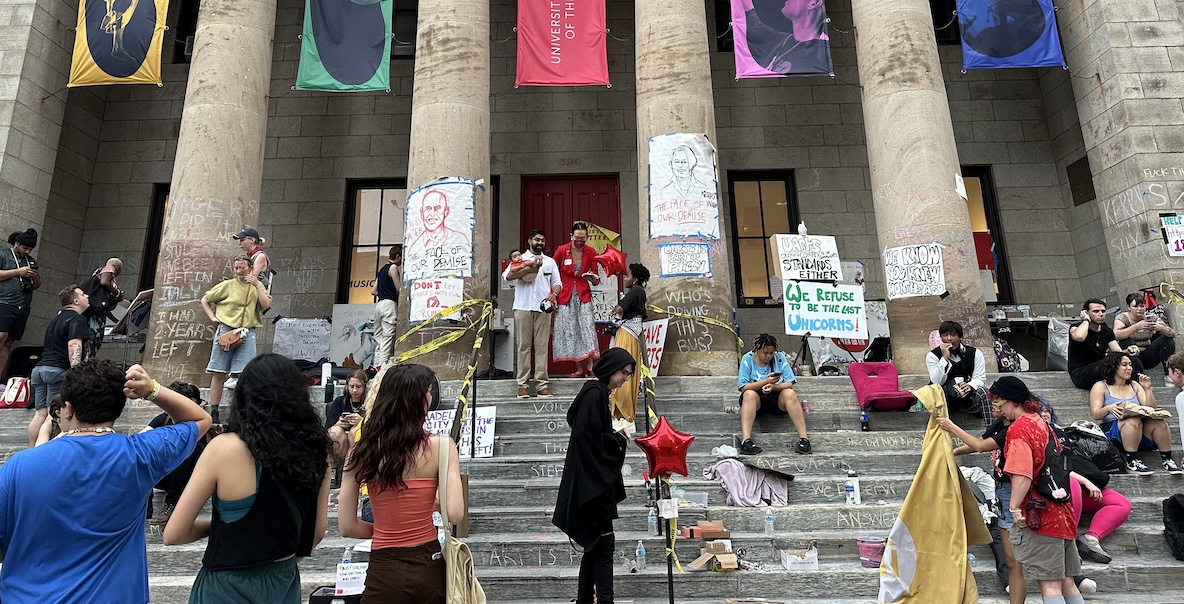The abrupt closure of the once-prominent 150-year-old University of the Arts is appalling and virtually unprecedented in the history of the Greater Philadelphia higher education landscape.
Something doesn’t add up. Typically, most universities routinely prepare financial plans, budgets, forecasts, monthly financial statements, cash flow analyses and other key management reports that provide up-to-date financial information, including early warning signs of any potential problems. In fact, this level of financial discipline is especially critical at institutions that are fiscally challenged, such as UArts. University leadership should never be in a position of having to say, “like you, we are struggling to make sense of the present moment.”
The fact that no one at the school can explain how and why their financial deficiencies, including an apparent $40 million funding gap, prompted an immediate closure would seem to indicate that these usual and customary financial practices were not being followed at UArts. If this turns out to be the case, it is organizationally and financially irresponsible — a managerial dereliction of duty. And it calls into question the integrity of the university’s senior management team and the quality and effectiveness of the board’s oversight.
It is unfortunate that UArts could not find a way to live within its means. Being heavily tuition-dependent, with modest enrollment numbers and a small endowment, it was likely an uphill struggle for many years. It would seem that downsizing might have been their first option. This likely would have involved shrinking their footprint, selling off some of their prime real estate, and putting the proceeds into their endowment.
It is incumbent on the UArts board and leadership team to disclose their “unspecified urgent financial crisis” along with the underlying facts and circumstances, and why they didn’t know about it far sooner than one week prior to their closure.
They could also have explored merger opportunities with other local universities. As a last resort, they could have borrowed a page from the Cabrini playbook, sold all their real estate, unwound the operation, and implemented a year-long transition plan to help relocate their students, faculty, and staff. Any of these options would have permitted a more orderly game plan than immediate closure.
It is commendable that Temple University has stepped forward to explore a possible merger opportunity with UArts. Hopefully, with the combined support of the City of Philadelphia and the Commonwealth of Pennsylvania, this option can become a reality. It seems like a natural fit for Temple to extend its physical presence from North Broad to South Broad and expand its existing fine arts and performing arts programs to incorporate the companion UArts programs.
Ironically, very preliminary discussions between UArts and Temple occurred back in the early 1990s when a prospective UArts donor thought there were too many art schools in Philadelphia and that UArts should consider a merger with Temple. Unfortunately, organizational logistics and leadership issues could not be resolved, and the donor deal fell through, so talks were discontinued. What a difference it might have made if UArts had combined with Temple some 30 years ago. They would likely be thriving today.
Interestingly, in the late 1980s there were discussions among the CFOs of UArts, Moore College of Art & Design, and the Pennsylvania Academy of the Fine Arts, who met at the request of their respective presidents to explore potential consortium opportunities. Unfortunately, talks stalled and nothing ever came of it, in large part because the financial conditions weren’t sufficiently problematic at any of the three institutions at that time for them to seriously consider operating any differently. It is unfortunate that nothing ever materialized from these discussions.
Sadly, most fiscally-challenged institutions do not seriously pursue their options for organizational restructuring, merger or closure until it is too late in the game. And in the case of UArts, they ran out of time.
It is incumbent on the UArts board and leadership team to disclose their “unspecified urgent financial crisis” along with the underlying facts and circumstances, and why they didn’t know about it far sooner than one week prior to their closure. They owe it to their students, faculty, staff, donors, supporters and all those who worked tirelessly over many years to preserve and enhance the quality, reputation and legacy of this once great university.
Louis J. Mayer, EdD served as Chief Financial Officer at The University of the Arts from 1985 to 1995.
The Citizen welcomes guest commentary from community members who represent that it is their own work and their own opinion based on true facts that they know firsthand.
![]() MORE ON UARTS FROM THE CITIZEN
MORE ON UARTS FROM THE CITIZEN



